Refine listing
Actions for selected content:
17000 results
A bright outlook for helio- and asteroseismology
-
-
- Book:
- Extraterrestrial Seismology
- Published online:
- 05 July 2015
- Print publication:
- 25 June 2015, pp 5-8
-
- Chapter
- Export citation
Planetary seismology: High risk, high return
-
-
- Book:
- Extraterrestrial Seismology
- Published online:
- 05 July 2015
- Print publication:
- 25 June 2015, pp 1-4
-
- Chapter
- Export citation
24 - The interpretation of seismic travel times
- from Part VI - Interdisciplinary research involving terrestrial seismology
-
-
- Book:
- Extraterrestrial Seismology
- Published online:
- 05 July 2015
- Print publication:
- 25 June 2015, pp 341-352
-
- Chapter
- Export citation
18 - Impact seismology on terrestrial and giant planets
- from Part V - Interdisciplinary research involving planetary and astrophysical sciences
-
-
- Book:
- Extraterrestrial Seismology
- Published online:
- 05 July 2015
- Print publication:
- 25 June 2015, pp 250-263
-
- Chapter
- Export citation
25 - Interpreting cross-correlations in seismology
- from Part VI - Interdisciplinary research involving terrestrial seismology
-
-
- Book:
- Extraterrestrial Seismology
- Published online:
- 05 July 2015
- Print publication:
- 25 June 2015, pp 353-364
-
- Chapter
- Export citation
Index
-
- Book:
- Extraterrestrial Seismology
- Published online:
- 05 July 2015
- Print publication:
- 25 June 2015, pp 434-441
-
- Chapter
- Export citation
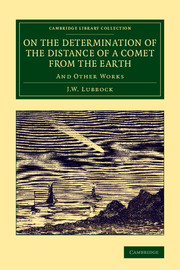
On the Determination of the Distance of a Comet from the Earth
- And Other Works
-
- Published online:
- 05 June 2015
- Print publication:
- 21 August 2014
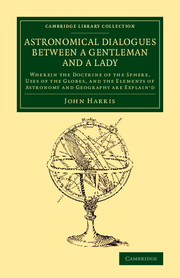
Astronomical Dialogues between a Gentleman and a Lady
- Wherein the Doctrine of the Sphere, Uses of the Globes, and the Elements of Astronomy and Geography Are Explain'd
-
- Published online:
- 05 June 2015
- Print publication:
- 13 November 2014
- First published in:
- 1719

Observations of Comets from BC 611 to AD 1640
- Extracted from the Chinese Annals, Translated with Introductory Remarks
-
- Published online:
- 05 June 2015
- Print publication:
- 06 November 2014
- First published in:
- 1871
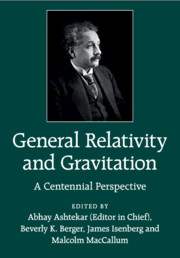
General Relativity and Gravitation
- A Centennial Perspective
-
- Published online:
- 05 June 2015
- Print publication:
- 01 June 2015
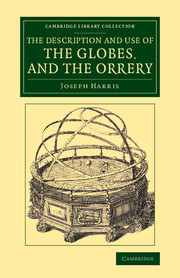
The Description and Use of the Globes, and the Orrery
- To Which Is Prefixed, by Way of Introduction, a Brief Account of the Solar System
-
- Published online:
- 05 June 2015
- Print publication:
- 13 November 2014
- First published in:
- 1731
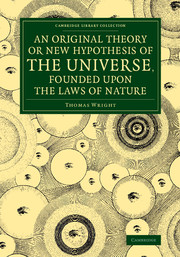
An Original Theory or New Hypothesis of the Universe, Founded upon the Laws of Nature
- And Solving by Mathematical Principles the General Phænomena of the Visible Creation, and Particularly the Via Lactea
-
- Published online:
- 05 June 2015
- Print publication:
- 06 November 2014
- First published in:
- 1750
Frontmatter
-
- Book:
- General Relativity and Gravitation
- Published online:
- 05 June 2015
- Print publication:
- 01 June 2015, pp i-iv
-
- Chapter
- Export citation
10 - Quantum Fields in Curved Spacetime
- from Part Four - Beyond Einstein
-
-
- Book:
- General Relativity and Gravitation
- Published online:
- 05 June 2015
- Print publication:
- 01 June 2015, pp 513-552
-
- Chapter
- Export citation
5 - Receiving Gravitational Waves
- from Part Two - New Window on the Universe: Gravitational Waves
-
-
- Book:
- General Relativity and Gravitation
- Published online:
- 05 June 2015
- Print publication:
- 01 June 2015, pp 242-286
-
- Chapter
- Export citation
Contents
-
- Book:
- General Relativity and Gravitation
- Published online:
- 05 June 2015
- Print publication:
- 01 June 2015, pp v-xii
-
- Chapter
- Export citation
List of contributors
-
- Book:
- General Relativity and Gravitation
- Published online:
- 05 June 2015
- Print publication:
- 01 June 2015, pp xv-xviii
-
- Chapter
- Export citation
9 - Global Behavior of Solutions to Einstein's Equations
- from Part Three - Gravity is Geometry, after all
-
-
- Book:
- General Relativity and Gravitation
- Published online:
- 05 June 2015
- Print publication:
- 01 June 2015, pp 449-498
-
- Chapter
- Export citation
List of figures
-
- Book:
- General Relativity and Gravitation
- Published online:
- 05 June 2015
- Print publication:
- 01 June 2015, pp xix-xxi
-
- Chapter
- Export citation
7 - Probing Strong-Field Gravity Through Numerical Simulations
- from Part Three - Gravity is Geometry, after all
-
-
- Book:
- General Relativity and Gravitation
- Published online:
- 05 June 2015
- Print publication:
- 01 June 2015, pp 361-411
-
- Chapter
- Export citation
